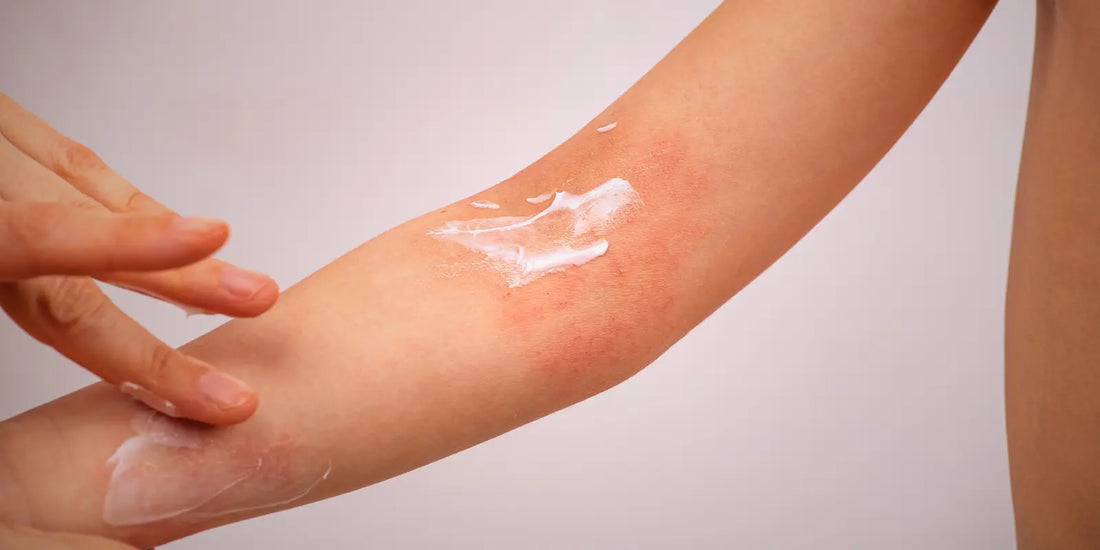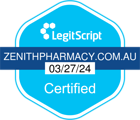Any seasoned parent has probably dealt with a fair few rashes over the years. Childhood skin issues aren’t uncommon, and you may have acquired a few tricks that help manage the vast majority of situations. Eczema is one of the most common skin problems to worry about for your child, and tends to be the condition that parents have the most experience with handling.
Unfortunately, not all rashes are the same. While many issues can look like eczema to the naked eye, other conditions such as contact dermatitis, psoriasis, fungal infections and heat rash are all real possibilities. And despite sharing symptoms and some visual similarities, these conditions often differ in appropriate treatment and warning signs that demand professional attention.
Having an understanding of how to differentiate these conditions is a simple way to avoid potential confusion. If you understand these differences and check your child’s skin regularly, you’ll often get a head start on dealing with the problem.
What Does Eczema Look Like in Children?
Before we start comparing eczema to other conditions, we should first make sure you’re equipped to identify eczema itself. Eczema generally appears as dry, itchy, inflamed patches that can look red and rough. Weeping is also a possibility.
If you have a young infant, it’s common to notice eczema on the cheeks or scalp. For older children, it’s not uncommon for eczema to show up on knees, wrists, ankles, or in elbow creases.
Eczema tends to:
- Be itchy, particularly at night.
- Flare up in cycles. In other words, it might improve and worsen at different times.
- Be triggered by environmental factors. Classic culprits are soaps, fabrics, temperature changes, and allergens.
- Become thickened or leathery if your child stretches it repeatedly.
Managing eczema involves two aspects. You’ll want to soothe symptoms to relieve discomfort. However, it’s also recommended to protect the skin barrier to prevent future flare-ups. Eczema is a long-term recurrent issue to manage, which is also one way to differentiate from some other rashes.
How Is Eczema Different From Contact Dermatitis?
Contact dermatitis is a skin reaction that happens when the skin comes into direct contact with an irritating substance or allergen. This also means it can appear quite suddenly, and clear rather quickly if the trigger is dealt with. Eczema tends to be ongoing and influenced by genetics, so this is one way to differentiate the two.
Children have delicate skin, so contact dermatitis becomes quickly visible in the area where contact occurred. This is in contrast to eczema which generally affects specific areas depending on the age of your child. They can, however, look similar at times, as they both often appear as red, itchy patches.
Contact dermatitis has common triggers such as soaps, detergents, perfumes, as well as certain creams and ointments. Children are also susceptible to irritation from urine in diapers, latex in toys and balloons, and nickel found in jewellery or clothing clasps.
If a rash is repeatedly appearing in the same spot (e.g. under a watch strap, around the mouth, or on the hands), contact dermatitis is the likely culprit. Gentle washing, cool compresses, and fragrance-free moisturisers usually help, but contact your GP if the rashes are unusually persistent.
How Can You Tell the Difference Between Eczema and Psoriasis?
Psoriasis is an autoimmune skin condition that causes thick, scaly patches to form when skin cells grow and shed too quickly. Psoriasis isn’t contagious, but it often runs in families. Its causes are not fully understood, but it can be triggered by several factors. Commonly, psoriasis will flare up due to infections or weather conditions, as well as certain medications.
Around a quarter of people with psoriasis develop it before the age of 18, and there is notable variance in how it affects each individual. Young patients with lighter skin might experience red patches of inflammation. However, darker skinned children and teenagers will often have patches that look brown, purple or grey. Psoriasis does tend to create silvery-white scales, regardless of skin colour.
Although most commonly affecting areas such as the scalp, elbows, knees and bellybutton, it can also affect fingernails, genitals and toenails. In very young children, it can also be easily mistaken for a nappy rash.
So, how do we tell the difference? In comparison to eczema, psoriasis tends to produce thicker, sharply defined plaques.It’s also less likely to weep or feel intensely itchy. Eczema usually feels drier and more irritated, and this is a noticeable difference when compared to the tough, scaly plaques that form with a psoriasis flareup.
How Can You Tell the Difference Between Eczema and Fungal Infections?
Fungal infections, commonly known as ringworm (or tinea), can mimic eczema a lot, especially when they first appear. Despite the name, ringworm is not a worm but a contagious fungal infection that can spread between humans, animals, and contaminated surfaces.
In regards to appearance, eczema will usually look patchier and more irregular. On the other hand, ringworm will often form in a ring shape with a scaly edge. You can expect ringworm to affect areas such as the body, feet, nails or scalp, depending on the type of ringworm it is. It’s uncommon for these fungal infections to appear in common eczema hotpots like the inner elbows and knees.
While eczema usually improves with steroid cream treatment, ringworm will worsen. This can be a useful point of differentiation, but ideally you want to recognise which condition your child has before you risk aggravating it with incorrect treatment. Normal treatment for fungal infection is an antifungal cream, but it’s also important to prevent its spread. We recommend keeping the affected area covered, and prohibiting your child from sharing clothes and towels.
How Can You Tell the Difference Between Eczema and Heat Rash?
Heat rash is essentially a blocking of the sweat glands. When sweat is trapped beneath the skin, it can cause a rash that looks red, brown, purple, or grey depending on skin tone.
It’s very common in newborns, especially during the first few weeks of life when their sweat glands are still developing. Older children and teenagers also get it, usually because of overheating, humid weather, fever, or thick products on the skin. Exercise or sports can also be a cause.
Heat rash tends to appear as small, itchy sports or clear blisters, which differs from your usual eczema rash. You’re also most likely to see heat rash on the face, neck, chest or torso, rather than the typical eczema locations.
Heat rash is usually mild and clears within a few days once the skin is kept cool and dry. Dressing your child in light, breathable clothing will also reduce some of the discomfort. If it does last longer than a few days, you may want to see your GP, especially if your child seems unwell or feverish.
Final Thoughts
Eczema is one of the most common childhood skin conditions, but it’s far from the only cause of irritation and inflammation. Distinguishing it from similar rashes helps ensure the right care from the start. For example, contact dermatitis and heat rashes can clear rather quickly if you identify them early and know how to manage them.
Once you’re confident that you’re dealing with eczema, a consistent long-term approach works best. Keeping skin hydrated and avoiding harsh soaps are some of the clear ways to make a difference. In our experience, teaching your kid some good skincare habits will go a long way in preventing flareups. When in doubt, it never hurts to consult your GP or dermatologist for further advice.


 Zen Xiao
Zen Xiao


